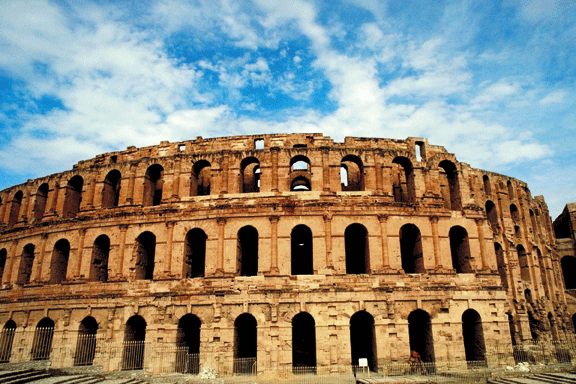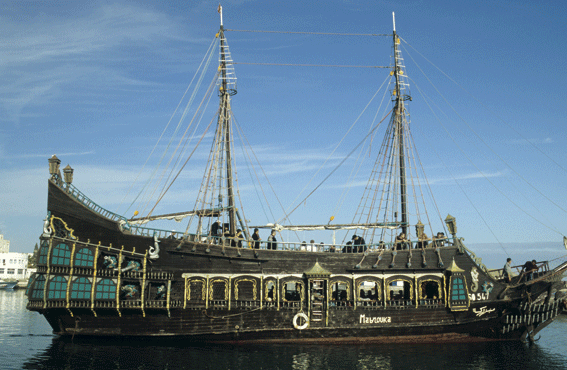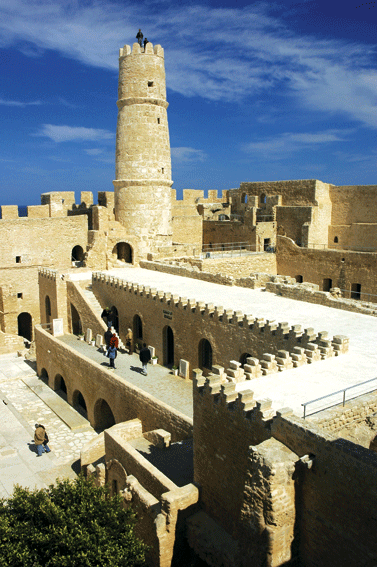
Travel
|
Tunisia’s atmospheric coastal town of Sousse is the gateway to the Sahel, a large swathe of land that stretches from the Gulf of Hammamet in the north to the Gulf of Gabes in the south.
By: By: Veronica Maria Garbutt
The Arabic name Sahel means coast or margin and in the case of sub Sahara applies to the very edge of the desert. Some two million tourists a year are drawn to the seaside’s golden sands. Plus the area is rich in natural resources – olive oil inland and crude oil offshore, making it the country’s most prosperous region.
Monuments from the Aghlabid and ensuing dynasties grace the Sahel’s larger towns. The Kasbah Museum in Sousse displays artefacts from sumptuous settlements while El Jem shelters what is probably the Roman world’s finest surviving amphitheatre. The Romans planted millions of olive groves in the area. Kairouan was the first Arab city in North Africa and developed into the fourth most revered in the Islamic world.
Sfax and Monastir are both highly regarded for their architecture, as is Mahdia which was the seat of the Fatimids, a dynasty that conquered Egypt. Although the coastline around Sousse and Monastir is the most highly developed, there are still places – such as the Kerkannah Islands off Sfax – where you can find complete solitude. For birdwatchers the marshland around the bay of Gabes attracts large numbers of wading species.
The western two thirds of the Sahel which are known as the Tell cover the plains of the Tunisian Dorsale, an extension of Algeria’s Tell Atlas mountains. Today’s Saheli (as the denizens are called) are renowned for hard work and success in government. Wheat is still grown on the high plains, but market gardening is big business in the more fertile soils south of Sousse. Here are grown winter salad vegetables to supply the local markets as well as for export to Europe.
An unusual mixture of ancient Islamic city, beach resort and industrial port, Sousse is Tunisia’s third largest city after Tunis and Sfax. It was founded in the 9th century BC as the Phoenician colony of Hamdrumete and was Hannibal’s naval base in his campaign against the Romans. Later, Vandals and Byzantines arrived and when the Arabs came in the 7th century they called the place Susa and revived it as a major port.
From Sousse the Aghlabids launched their successful invasion of Sicily. Later the town survived the attentions of the Normans, Spanish, Turks, Venetians and French. The latter arrived in 1881 and immediately set about constructing the Ville Nouvelle, laying the infrastructure of the modern city. All Sousse’s main roads converge on Place Farhat Hached as well as the main Tunis-Sfax railway line.
Southeast of the square lies the fine old Medina where three of the country’s most important Islamic monuments can be found. The Great Mosque, the Ribat and the Kasbah lie within Sousse’s crenellated 9th century walls. The Great Mosque has all the appearance of a fortress and is a typically austere Aghlabid affair. According to a Kufic (early Arabic) inscription in the courtyard it was built in 851 CE by a freed slave called Mudam on the instructions of the Aghlabid ruler Abdul Abbas.
The best views of the mosque can be found at the nearby ribat. This small square fort was begun by the Aghlabids in 821 CE. The word ‘ribat’ is linked with ‘marabout’ as the building had both a military and religious purpose. It was home to devout warrior troops who would fight when necessary and in peacetime lived simply and studied in their cells around the ribat’s inner courtyard. From the circular tower are stunning views over the Grand Mosque, the medina, new town and the port.
The Kasbah, which today houses a fine archaeological museum, was built into the city walls in the 11th century. It incorporates the Khalef el Fela watchtower built by the Aghlabids which presently serves as a lighthouse. The entrance lies on Avenue du Marechal Tito just outside the southwest corner of the medina. Inside are showcased exceptional mosaics which will delight even those who have experienced Tunis’ fabled Bardo Museum. Best of all the collections are displayed in light airy rooms amid courtyards filled with flowers and shady trees.
Time now to head to the main access point to the medina, the Place des Martyrs. A good spot for fixed prices and browsing for gifts for friends and family back home is The Soula Shopping Centre in the northeast corner. Venture further inside the bustling souk that forms the commercial heart of the medina. The scene is a riot of colour and cacophony, packed with haggling merchants, shoppers and market boys with improbably loaded carts trying to negotiate their way through the melée.
The Ville Nouvelle lies north of Place Farhat Hached. The main street Avenue Habib Bourgiba is lined with cafés, hotels and shops, including an interesting department store. Architecture buffs will enjoy spotting Art Deco buildings such as the ABC cinema on Avenue Habib Thaneur, an office building at the corner of Rue d’Algerie and Rue de Palestine and private houses on Boulevard de la Corniche. Nearby lies the Musée de L’Olivier where you can check out the olive oil production process.
North of Avenue Habib Bourgiba lies Boulevard Hedi which runs next to the long sandy Boujaffar beach. Back from the beach are the hotel complexes which run some 7 km. up the coast to Port El Kantaoui. If water sports are your thing, you will find jet skiing, parasailing, waterskiing and windsurfing at four franchises dotted along the seafront. Pedalos, inflatable bananas and doughnuts can be hired too for those who enjoy the water at a more relaxed pace.
At the southern end of Avenue Boujaffar it is possible to hire a horse and carriage or take a tuk tuk or toytrain to Port el Kantaoui. Based on Sidi Bou Said, this swish resort development centres on a large marina where sleek yachts from all over the Mediterranean are moored. Another highlight of this garden port is the manicured 27-hole championship course built in 1927 on a 250 acre site. Designed by Californian golf architect Robert Fream, it is intended for golfers of all standards.
If you are fond of fish then dining out in Sousse is a delight. Some good but inexpensive restaurants can be found between the port and the walls of the medina. Otherwise Route de la Corniche and Avenue Habib Bourguiba offer the best selection of mid-range restaurants. For couscous, chackchouka, kamounia and grilled chicken try Naseem on Avenue de L’Independence. El Sofra at 6 Rue El Sofra is a highly regarded place in the medina offering several Tunisian dishes that change from day to day.
For Kairouan take a louage (shared taxi) from the louage station opposite the bus station at Souk el Ahad. Highlights of the holy city include the Great Mosque, Aghlabid Basins, the Medina and Mosque of the Barber. To visit the magnificent Roman amphitheatre at El Jem hop on the train at Sousse’s main station 500 metres west of Place Farhat Hached on Avenue Hasouna Ayachi.
From el Jem the train continues south to Sfax, which is well worth an overnight stay. Sfax’s main attraction, the medina, is home to a thriving community and is refreshingly untouristy. The streets are built on a grid system which makes finding your way around easy. Don’t miss the Museum of Arts and Traditions on Rue Sheikh Sidi Ali Ennouz, the Architecture Museum in the Kasbah and the Archaeology Museum on Avenue Ali Belhaouane.
Monastir and Mahdia are easy day trips from Sousse. Frequent train services leave from Bab el Jedid station which lies by the port beyond the south-eastern corner of the medina. Monastir was the birthplace of Tunisia’s first president, Habib Bourgiba, in 1903 and is home to the family mausoleum, Bourgiba Mosque and Presidential Palace. Overlooking the sea the old Ribat of Harthema was built in 796 by Harthema Ibn Ayun.
Route de la Falaise leads to most of the large hotels and on back to Sousse. Set on a plateau shaded by ancient olive trees Monastir golf course offers the remarkable sight of a garden suspended between lakes and sea. Designed by Robert Fream this 18-hole, par 72 course straddles wadis and ravines. It follows the hillside slopes with five starting points per hole allowing all golfers to complete a course suited to their level of play.
Our last stop in the Sahel is the charming typical Tunisian town of Mahdia, complete with colourful fishing harbour and medina. Founded in 916 CE by the first Fatimid Caliph, Obeid Allah, known as El Mahdi, this relaxed, untouristy town is accessed through a heavily fortified gateway known as Skifa El Kahla (the dark gate). After visiting the Grand Mosque, lighthouse, Souq and Borj el Kabir fortress you can wind up your journey with a coffee or tea and mouth watering sweet pastries at the little café in Place du Claire. Happy trip!